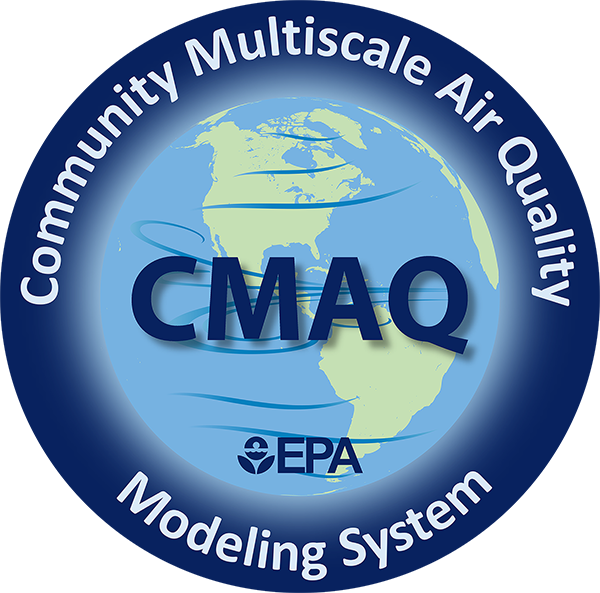-
Notifications
You must be signed in to change notification settings - Fork 207
CMAQ Release Notes: Postprocessors
No changes were made to this tool in CMAQv5.4.
Bill Hutzell, U.S. Environmental Protection Agency
Type of update: Bug Fix
Release Version/Date: CMAQv5.5
Description: The update to COMBINE detects and reports syntax errors in a species definitions files listed below. Error messages list the syntax error so the user can more easily correct the definitions file. Note that COMBINE stops at the first detected error so correcting a species definitions file is an iterative process if the file contains several errors.
O3_ERROR1 , ppmV, O3[1]/
O3_ERROR2 , ppmV, O3[1]\*
O3_ERROR3 , ppmV, O3[1]+
O3_ERROR4 , ppmV, O3[1].1000.
O3_ERROR5 , ppmV, O3[1]y1000.
O3_ERROR5 , ppmV, O3[1]O3[1]
Significance and Impact: Prevents Errors in Results from Postprocessing by COMBINE
References: N/A
Internal PRs: PR#1091
Jesse Bash, U.S. Environmental Protection Agency
Type of update: Bug Fix
Release Version/Date: CMAQv5.5
Description: There are a couple of issues with the SpecDef_Dep files resulting in the underestimation of total nitrogen deposition. The following changes were made to be more consistent with new NADP wet deposition and field scale dry deposition measurements:
- HNO4 (PNA) was missing from oxidized dry deposition
- NO3 radicle was omitted from oxidized dry and wet deposition
- cb6 was missing MTNO3J in the organic N deposition
- PANT was not added to the organic N deposition
Significance and Impact: This does not change model results and only modifies post processing. The impact on post processed wet deposition results are minimal. The omissions from the dry deposition variables can amount to about a 1% increase in the post processed results. However, the largest increases are in remote vegetated and coastal areas which tend to be more sensitive to nitrogen loading.
References: N/A
Internal PRs: PR#1063
Havala Pye, U.S. Environmental Protection Agency
Type of update: Bug Fix
Release Version/Date: CMAQv5.5
Description: Removes any formulas that include "CLNO2", CRACMM does not have "CLNO2". Fixes any formulas that contain "PNA", which is named "HNO4" in CRACMM.
Significance and Impact: Enables automated post processing of deposition via combine. Does not affect model results.
References: N/A
Internal PRs: PR#966
Christian Hogrefe, U.S. Environmental Protection Agency
Type of update: documentation, minor bug fix
Release Version/Date: CMAQv5.4
Description: Updated the README and inline code documentation to clarify that the W126 option computes the W126 daily index value as a weighted average of ozone concentrations between 8am & 7pm and that these daily index values are only an intermediate step in computing the W126 metric for secondary ozone standard analyses. These daily index values can then be used to calculate annual W126 values for the secondary ozone standard by using different tools to first compute 3-month sums of daily W126 index values and then determine the consecutive three month period with the largest 3-month sum of daily W126 values. There were also minor code corrections that fixed two issues that may have caused problems for certain compilers in debug mode but did not affect the results of the computations in the tests conducted.
Significance and Impact: No impact on results for the cases tested.
References: N/A
Internal PRs: PR#859
No changes were made to this tool in CMAQv5.4.
Christian Hogrefe, U.S. Environmental Protection Agency
Type of update: expand code functionality
Release Version/Date: CMAQv5.5
Description: The previous version of sitecmp_dailyo3 code imposed a maximum station ID character limit of 9. While sufficient for all observational networks previously processed through sitecmp_dailyo3, this constraint caused problems when processing emerging networks with hourly data which had station IDs exceeding that limit. The increase of the maximum station ID length to 20 remedies this problem and makes the limit consistent with the one being used in sitecmp.
Significance and Impact:
There is no impact on results for stations with IDs not exceeding 9 characters. When the previous code encountered a station ID with more than 9 characters, each such site was processed and written out 24 times per day (rather than just once), and the observed daily metrics were missing for each of these 24 output records per day. The modeled daily metrics were correct and repeated for each of the 24 output records written for each day. Due to this 24-fold repetition of matched records for each day in such cases, the output files created with the previous code were substantially larger than they should have been, and they also contained no valid observed metrics at such stations. The updated code corrects this behavior.
References: N/A
Internal PRs: PR#967
Type of update: Model Clean-up
Release Version/Date: CMAQv5.4
Description:
The POST tools appendwrf, bldoverlay, and blockextract are no longer maintained and have been removed from the CMAQ code repository beginning with version 5.4. These tools can still be accessed through previous CMAQ versions.

- Instrumented Models
- MPAS-CMAQ Coupled Model
- WRF-CMAQ Coupled Model
- Chemistry
- Transport Processes
- Dry Deposition/Air-Surface Exchange
- Emissions Updates
- Process Analysis and Sulfur Tracking Model (STM)
- Structural Improvements
- Diagnostic Options
- Preprocessors
- PYTOOLS
- Postprocessors
- Utilities
- Stratospheric-Tropospheric Exchange (STE)